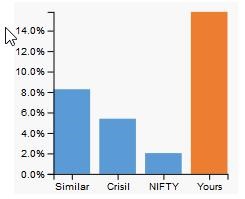By Amit Pishe
During childhood, we were all at some point pushed or encouraged to participate in Story Telling competition. Story telling had key characters and depiction of inanimate things described through words which kind of used to create some picture or motion in our minds. Stories were used to teach and learn.
Nothing much has changed today in applying the same ‘storytelling’ concept for data/datasets – in what we now call Narratives/ Data Narratives.
Big Data is the buzz word, however visualising and explaining the entire dashboard may pose some challenges, not all the info displayed may be required for all the users.
Narratives/Data Narratives come in handy to pass on all the relevant information, yet being easy to grasp it succinctly. Narratives are basically the Talking data (highlighting insights, trends, unique patterns, exploring factors shaping data) for the data driven stories, they provide crisp, concise information. More advanced in a data visualization dashboard format, trying to tell us the characteristics of data.
Leveraging the Data Narratives and writing one (in general):
- Understanding the overall data components (metrics & dimension), individually mapping those to weave a story line for a given chart/dashboard. Story line is the central theme of the narration. Always question yourself, why are you considering only that particular data component
- Storyline can be translated in multiple ways, pick any one version and compare how it scores with the rest. Are all the data points included?
- Flow of information/ insight should transition effectively throughout story without abruptly ending
- Target audience needs to be kept in mind – BFSI, Health care, Media, Telecom etc. to provide information accordingly.
- Get to know the Inputs, Analysis of the data, result orientation and finally conclusion
Sample Template/use case (Investment Banking): for a given Business user (Racey) by an Indian bound Mutual Fund investment banking firm.
Wealth Management Report
Date: dd-mm-yyyy
Dear Racey,
Information about your portfolio
a. Portfolio update for Last quarter vs current month growth/loss. Net worth for the year ending financial fiscal. Peer rating compared to other investors. Benchmarking the performance.
b. Equity portfolio – returns on investments information, fund index and NIFTY. Type of investments in different segments (Mid cap, advantage funds, MIP and so on). Display chart with comparison between CRISIL, NIFTY, current portfolio returns
Similar investors at our bank has given a return of 8.3%. Crisil Composite Bond Fund Index has given a return of 5.4%. NIFTY has given a return of 2.0%. Your portfolio has given a return of 15.8%, i.e. on par with or better than Similar investors at our bank, Crisil Composite Bond Fund Index and NIFTY
c. Fixed income portfolio details (~ 1% of total portfolio) are mostly in intermediate term funds, this investment is driven by short term plan growth investments options.
d. Your Portfolio description through charts spread across segments
Your equity investments (99% of total portfolio) are mostly in large cap growth oriented funds. Your portfolio is dominated largely by Canara Robeco Treasury Advantage Fund – Institutional Plan- Growth option, UTI – Treasury Advantage Fund – Institutional-Growth and HSBC MIP – Savings – Growth.
e. Suggestion on investment – based on average cash balance in savings account (~15% of savings into xxx plan). I would suggest investing in Pure Value fund growth options
For the detailed report, please refer www.Investmentfirm.co.in/racey/portfolio.htm
Gist: In the sample example, the data components are underlined (Portfolio, Equity portfolio, Fixed income portfolio and so on). The entire dashboard would have multiple other charts, the key data component points will provide holistic view without going into too much specifics.
- Main summary is to highlight on how the user portfolio is performing over variety of time periods, provide benchmarking info and analyse the saving patterns of the user.
- Based on the savings, suggest the investment as a conclusion.

